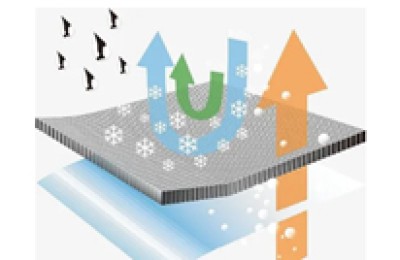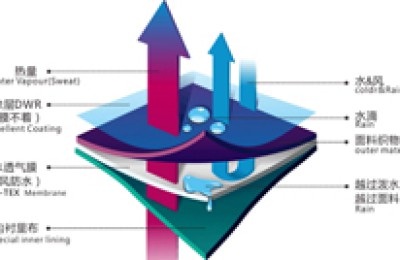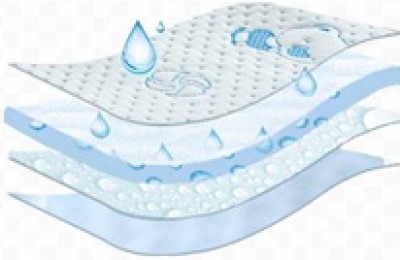In October this year, the national textile and apparel trade volume was US$28.72 billion, a year-on-year increase of 8.9%, of which exports were US$26.54 billion, a year-on-year increase of 10.2%, and imports were US$2.18 billion, a year-on-year decrease of 4.7%. The trade surplus for the month was US$24.36 billion. An increase of 11.7%. From January to October, the cumulative trade volume of textiles and clothing was US$270.63 billion, an increase of 5.7%, of which exports were US$248.47 billion, an increase of 6.4%, imports were US$22.16 billion, a decrease of 1.1%, and the cumulative surplus was US$226.31 billion, an increase of 7.1%.
Export
Each of the four major markets has its own characteristics
European and American markets performed well
In October, the three major markets of the EU, the United States, and ASEAN jointly drove exports to double-digit growth. Textile and apparel exports increased by 10.2% in October, another double-digit growth since March, driving the cumulative growth in the first 10 months to 6.4%. Among them, the three major export markets, the EU, the United States, and ASEAN, contributed 28.5%, 12.7%, and 20.2% to the overall export growth respectively. General trade and small-scale border trade exports maintained growth, while processing trade continued to decline. In October, general trade and small border trade exports maintained growth, with increases of 10.6% and 21.5% respectively, while processing trade fell by 6.3%. From January to October, the cumulative exports of general trade were US$188.6 billion, an increase of 6.6%, and processing trade decreased by 1.51%, which was mainly affected by the 9.8% decrease in exports of processing with supplied materials, while the processing of imported materials increased slightly by 0.5%; small border trade increased by 2. %.
On the slowdown in EU growth
Since the beginning of the year, the EU has maintained a strong momentum in my country’s major export markets. The cumulative export growth in the first nine months reached 16.6%, leading other markets. The growth rate of exports to the EU slowed down slightly in October, with exports that month amounting to US$4.25 billion, an increase of 7.9%, the lowest growth rate of the year (except for negative growth in February). From January to October, my country’s cumulative exports to the EU were US$49.31 billion, an increase of 15.8%, of which textiles increased by 11.3% and clothing increased by 17.1%. The export volume of knitted and woven clothing increased by 13.7%, and the export unit price increased by 4.2%.
Steady growth in the United States
After entering the second half of the year, exports to the United States tended to be stable, with exports remaining above US$4 billion each month. Exports to the United States in October were US$4.05 billion, an increase of 13.9%. From January to October, my country’s cumulative exports to the United States were US$37.65 billion, an increase of 8.3%. Among them, textiles and clothing increased by 7.1% and 8.5% respectively. The total exports of knitted and woven garments were 5.178 billion pieces (sets), an increase of 4.1%, and the average export unit price increased by 4.2%.
Another rebound against ASEAN
From the beginning of the year to September, the growth rate of exports to ASEAN slowed down significantly compared with previous years, and even showed negative growth in February and September. In October, exports to ASEAN expanded again. Exports that month were US$3.52 billion, a year-on-year increase of 24.7%. Both export volume and year-on-year reached new highs during the year. Among them, Vietnam accounts for half of the share, and exports to Vietnam increased by nearly 50%. From January to October, cumulative exports to ASEAN were US$29.11 billion, an increase of 5.6%. Exports of bulk export commodities fabrics and yarns increased by 8.5% and 12% respectively, and finished products increased by 16.3%. Among garments, the export volume of knitted and woven garments increased by 10.1%, among which woven garments grew rapidly, with an increase of 164.5%. The average unit price of exports dropped by 10.3%.
Accelerating the decline in Japan
Exports to Japan in October were US$2.36 billion, down 14.6%. The decline was further increased than in the previous period, with textiles and clothing falling by 10.3% and 15.5% respectively. The total export volume of key commodities knitted and woven garments fell by 14%, and the export unit price fell by 2.2%. From January to October, the cumulative exports to Japan were US$20.56 billion, down 9.2%, of which the export volume of knitted and woven clothing fell by 9.8%, and the export unit price fell by 2.3%.
Import
Clothing imports increase, prices fall
The difference between domestic and foreign cotton prices has narrowed
In October, textile exports increased by 13.8%, exceeding the 8.2% increase in clothing. From the analysis of quantity and price index, textiles are mainly driven by quantity growth (export quantity index is 115.7), while clothing is mainly driven by export prices (price index is 102.2). The fastest-growing commodities in textiles are mainly fabrics (up 17.2%) and finished products (up 12%), with yarn growing only 5.5%. Among clothing, the total export volume of knitted and woven clothing increased by 7.4%, of which the export volume of lower-priced knitted clothing decreased by 0.8%, and the export volume of woven clothing increased by 24.5%. From January to October this year, my country’s textile and clothing exports were US$92.88 billion and US$155.59 billion respectively, an increase of 5.8% and 6.7% respectively. All major categories of commodities achieved growth, among which the export volume of knitted and woven clothing increased by 8%, and the average export unit price decreased by 1.2%. Since July, monthly imports of textiles and clothing have continued to decline, and there was still no improvement in October, with a decrease of 4.7% that month. Among them, textiles decreased by 8.4%, imports of yarn and fabrics of major commodities decreased by 8.9% and 12.9% respectively, and finished products increased by 4.1%. From January to October, the cumulative import of textiles fell by 5.8%, of which yarn and fabrics fell by 7.8% and 9.7% respectively, and finished products increased by 6.6%. Clothing increased by 18.7%, of which a total of 460 million pieces (sets) of knitted and woven clothing were imported, an increase of 65.7%, and the average unit price of imports decreased by 26.6%.
Cotton imports shrank significantly in October, with only 80,000 tons imported, a year-on-year and month-on-month decrease of 42% and 33% respectively. The average unit price of imports dropped by 38.1%. From January to October, a total of 2.084 million tons of cotton were imported, and the average unit price of imports increased slightly by 3.5%. With the implementation of the Xinjiang cotton target price reform pilot policy, the purchase and processing of seed cotton in various places has gradually begun in October. Under the guidance of the policy, the spot price of lint cotton returned to the market pricing mechanism and dropped significantly, and the price difference between domestic and foreign cotton narrowed. As the mainland’s subsidy policy has not yet been implemented, mainland cotton farmers are seriously reluctant to sell, and the acquisition progress is still delayed.�. The harvest progress in Xinjiang is slightly faster than that in the mainland.
In mid-to-early October, the spot price of domestic lint cotton continued the decline in September; in late October, textile companies began to restock raw materials, and the spot price of lint cotton stopped falling and stabilized. The monthly average price of China’s cotton price index (CCIndex3128B) in October was 14,848 yuan/ton, a decrease of 1,743 yuan/ton from the previous month. The monthly average price of China’s imported cotton price index FCIndexM was 74.80 cents/pound, a month-on-month decrease of 2.53 cents/pound. The discounted RMB 1% tariff and sliding tax were 11,772 yuan/ton and 13,968 yuan/ton respectively, which were lower than the Chinese cotton price index of 3,076 yuan and 880 yuan respectively during the same period, and the price difference narrowed by 1,354 yuan and 1,520 yuan respectively.






